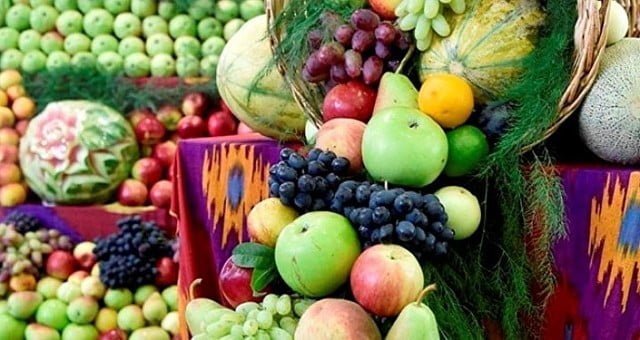According to EastFruit analysts, in 2021 Uzbekistan once again reduced fruit exports to China – one of the most attractive fruit markets in the world. In the first eight months of 2021, fruit exports in volume fell by 16% compared to the same period in 2020 and three times compared to 2019. Thus, the negative trend in the supply of fruit to the Chinese market continues.
The decline in exports of Uzbek cherries was especially noticeable, despite the very low price level. In 2021, Uzbekistan managed to find and deliver to China only 14 tons of cherries that met the requirements of demanding Chinese importers. Uzbekistan exported 105 tons of cherries in 2020, in 2019 – just over 600 tons, and in 2018 – 148 tons, that is, since gaining access to the Chinese cherry market, Uzbekistan has never exported so little cherries to China.
It is China that is the fastest growing market for cherries in the world. The exports of cherries is growing fast, and their prices remain very high. Moreover, it is China that pays one of the highest prices for cherries. However, Uzbekistan was forced to supply cherries in 2021 mainly to Russia and much cheaper than in 2020, since their quality did not meet the requirements of buyers from other countries. Uzbekistan had more and more competitors in the Russian market who offered a better product. We gave a detailed analysis of the reasons for low prices for cherries in Uzbekistan in this article.
You can see and read how cherries of export grade quality are grown, refined and packaged in Uzbekistan here. You can read and listen in detail how much it will cost to set up such a farm and how to do it right.
Let’s get back to the fruit trade between Uzbekistan and China. An anti-record has also been set over the past seven years even for the most popular position, namely the exports of Uzbek raisins (dried grapes) to China! It fell by 17% compared to 2020 and three times compared to 2019, when the export volume was at its maximum. The only export position where Uzbek exports to China increased was dried apricot. The export of dried apricot grew by 37% compared to 2020, but its share in export was small – only about 5%, so it did not impact the overall negative dynamics largely.
“The global markets for both fresh and dried fruit are becoming more competitive as production in developing countries grows. This is facilitated by a freer access to information about cultivation and processing technologies, which allows faster implementation of these methods in production. The FAO and EBRD also strive to foster the transfer of technology and market knowledge, in particular through the EastFruit platform. However, since there is no shortage of fruit in the world, for success in the market it is essential to ensure high quality and safety of the grown fruits in the sense buyers, and not producers themselves, perceives it. Too little attention is paid to fruit quality, refinement and marketing in the post-Soviet countries, which leads to the need to sell or send products for processing at the lowest prices,” explains Andriy Yarmak, economist at the Investment Centre of the Food and Agriculture Organization of the United Nations (FAO).
By the way, while Uzbekistan was reducing the export of fruits to China, Iran was actively increasing it. In the first 8 months of 2021, the export of Iranian fruits and nuts to China increased by 75%!
The use of the site materials is free if there is a direct and open for search engines hyperlink to a specific publication of the East-Fruit.com website.




